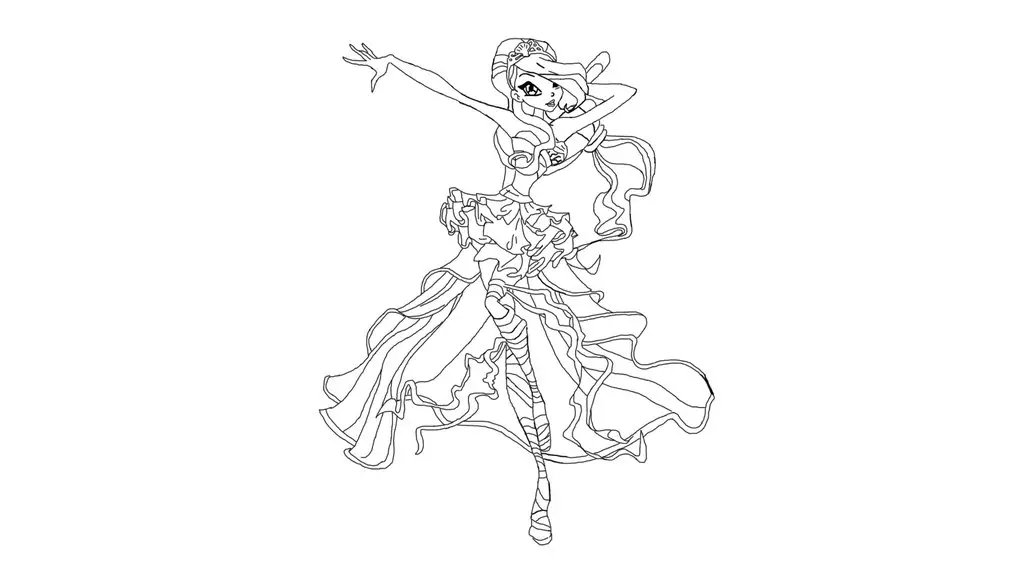When Sonidero DJs in Mexico build up their huge sound systems in the streets … a long night of dancing lies ahead. Swiss photographer Mirjam Wirz documented these so-called «Bailes» for some years and has published her research in the book «Sonidero City». In the following interview she talks about how «Bailes» are closely interwoven with everyday life culture, and how she visited Cumbia DJs/Sonideros in their houses in popular neighborhoods of Mexico City.

Sonido Delgado at the event Sonideros de la Zona Norte, Mexico City, Granjas Valle de Guadalupe, 2010 [© Mirjam Wirz]
For Norient the Sonidero Buzz Maeschi has made an exclusive mix, enjoy!
Buzz (Dieciséis toneladas) – Sonidero City Mix by Boss Hi-Fi on Mixcloud
What is the typical atmosphere at a Bailes and what has fascinated you about these events?
A baile is a big thing for a neighborhood, especially when it’s a baile in the street. It starts with the technicians showing up in the early afternoon, for really big bailes they even start to build everything up the day before. They build up towers of speakers, light installations, the DJ equipment etc. The neighbours and especially the younger audience is there watching them. Later some of the immediate neighbours start to build up stalls, bars and grills for the baile. There is a mixture of anticipation and curiosity in the air. In the early evening the technicians finish, go to eat something and to change. When the baile starts, it is already dark and people show up with fresh hair and in their good clothes. It’s very much a neighbourhood thing and it follows the unspoken rules of the neighborhood, also channels the tensions and joy of the people. Some come to watch, many come to dance, others to get drunk. Some search for love, and others for trouble. I like the music, the set up of a baile, the massive loudspeaker towers, the people dancing and the DJ sending greetings out to the audience, the atmosphere and the social character of the bailes. Depending on the neigbhorhood the atmosphere can be loaded and a bit heavy. Things are very immediate. The street where a baile takes place is the center of the world for a couple of hours.

Soundsystem of Sonido Amistad Caracas/Victor Pérez at a street dance in the Santiago de Iztacalco neighborhood, 2010 [© Mirjam Wirz]

A street dance with Sonido Sonorámico/Raúl López in Campestre Aragón, Mexico City, 2011 [© Mirjam Wirz]
For your understanding of the phenomenon «Bailes», how important was it to know what music the sonidero select and which kind of dance the audience does at the different locations? In which extend a photographer of music should also be an ethnomusicologist?
I don’t think that a photographer of music should be a ethnomusiciologist. That is also why there is no CD coming in the Sonidero City book. Sonidero City is a collection of visual material connected to the sound system culture and this does not necesseraly have a to be closely connected to the history of the music. But of course spending time in the scene one learns about the music and its history.

Left: Pancho at his record stall at Tepito market, Tepito neighborhood, Mexico City, 2011 Right: Jorge, record seller on Balderas street in the downtown area of Mexico City, 2010 [© Mirjam Wirz]
How did the Sonidero Scene came to your attention?
Sonidero City started because of the music. I had heard and liked Cumbia music for the first time in Bolivia and Peru in the overland buses in beginning of the 90ies, and heard it again in a bus from the Veracruz at the Gulf of Mexico back to Mexico City. I wanted to know more about Cumbia music and started my research in Mexico City, talking to the LP sellers in the streets. They introduced me to Morelos who has been among the first ones to bring Cumbia LPs from Colombia to Mexico in the 1960ies and knew most of the people in the scene. He took me around and introduced me to the Cumbia DJ’s/sonideros. To my surprise I found out that Cumbia music, as nowhere else, is played by sound systems in Mexico City and some cities close to the capital. Besides my affection for the music, I like the sound system thing a lot and I just went on and on meeting people from the scene, going to bailes and visiting sonideros. So the basis for Sonidero City is the love for the music and the bailes, otherwise I would not have been working on it so extensively over the period of years.

Sonido Coronado/Señor Cruz with DJ equipment and record collection in the house of his family, Penon de los Banos neighborhood, Mexico City, 2010 [© Mirjam Wirz]
Your photos show the Sonideros as proud collectors of old vinyl. How much today’s Bailes are related to the past?
The sonideros play old and new music, there are certain traditions of which music they play and how they play it. Most of them follow these traditions, not so many are trying to do things different or experiment with it, which some people are criticizing. In Mexico, other than I saw in Colombia, the sound system bailes have not changed much in the last 40 years, there have been ups and downs, but it still is an important part of everyday life in the popular neighborhoods and embraces people of different ages and social backgrounds. Because of the bailes getting bigger and bigger, some sonideros from the older generation, most of them still having their LP collection at home, along with younger people from an alternative scene, started to organize smaller events where they play with records again like in old times. So the LP sellers are still well in business.

Sonido Continental 2000/Miguel Angel Cruz Flores with his family in the courtyard of their house, Peñón de los Baños neighborhood, Mexico City, 2010 [© Mirjam Wirz]

Sonido Coronado/Señor Cruz with DJ equipment and record collection in the house of his family, Peñón de los Baños neighborhood, Mexico City, 2010 [© Mirjam Wirz]
Click here to view the embedded video.
Another central theme of your photos are men posing in front of their sound systems. What role does technology play as status symbol?
In fact there are not many women in the sound system business. To have a sound system is often a family business and that is how the women and children are involved and have their part somehow, but the owner and the DJ of a sound system is mostly male. One example is Sonido La Morena, the daugther of Sonido Fascinacion, that is a whole dinasty of sonideros. La Morena/Maria Luz de Perea has a small record shop, is in charge of a sonidero internet radio program, plays music as a DJ and is often asked to be the announcer for events. There is a tradition of posing with one’s soundsystem, sometimes only the owner, sometimes the whole family. It means showing what you have and being proud of it. It can be seen in the pictures of the past, that people took for their private albums.
![Sonido El Sabor Chemix/Chema and in photo of a street dance in the 1980ies, Ramos Millán neighborhood, Mexico City, 2010 [© Mirjam Wirz]](http://norient.com/files/2014/04/011.jpg)
Sonido El Sabor Chemix/Chema and in photo of a street dance in the 1980ies, Ramos Millán neighborhood, Mexico City, 2010 [© Mirjam Wirz]
As I never tell people what to do in front oft the camera, just giving them a minimal frame, makes them repeat the poses they always had in connection with the sound system. The sound system is a powerful machine, a giant radio, as they call it in Colombia, and it also is a sign of potency for the owner/group, that is why sound system bailes in many countries where they have them are organized as battles. But it’s important to say that the sound system doesn’t just encompass the onwer and his family, but refers to the whole system that is behind: the MC, the technicians, the fans, the residents of the quarter from which the sonidero comes. All told then, the system within which the music is played and is closely interwoven with the everyday culture of the people.

Two guys in their tropical sound system fan jackets, dance with Sonido Super Dengue and Polymarchs at Olímpico, Pantitlán neigborhood, Mexico City, 2014 [© Mirjam Wirz]

[© Mirjam Wirz]
As the Sonidero culture is strong related to private rooms and families, was it hard for you to convince them to open up their world for you? What has remained hidden to you and your camera?
No, it was not hard. Normally when I went to a baile, I had met the sonidero that would play that night before, also in order to be more safe at the event as the neigbhorhoods where the sonideros are playing are often rough zones. Mostly I met the sonideros at their home which means I normally met the whole family, spending some time with them, talking and listening to their music collection. Most of the sonideros I have met several times, it needs trust from boths sides. What has remained hidden to me is everything they did not want to expose or show as a representation of themselves. Of course I would never push to enter further than that.

Left: Setting up for a street dance with Sonido La Conga/Pedro Perea, Aragón neighborhood, Mexico City, 2011 Right:Sonido Maracaibo/Enrique Lara in the courtyard of his house, Ramos Millán neighborhood, Mexico City, 2012 [© Mirjam Wirz]
Can you describe the social function of Bailes in the villages or poorer quarters of the city? Are they private or commercial events?
You can find any kind of baile: from mass events to smaller neigborhood yearly festivities to private birthdays. In the beginnings, sonideros started their sound systems in order to have a business and because they liked the music and the parties. As Jaime Ruelas, the designer of many of the sound system flyers put it, the bailes have established themselves as a therapeutic activity for people and they are an import social ventil in a way that, if you would take it away from the people, the situation might explode. People join the bailes to forget their problems and escape their difficult life situation. The bailes balance the tensions, because they let people do what they want in the way that they want.

Sonido La Changa/Ramón Rojo Villa, the most known sonidero of Mexico City, at a big dance in the Centro de Convenciones, Tlalnepantla, Estado de Mexico, 2011 [© Mirjam Wirz]
After seeing so many Bailes, what do you miss most when you do party in Switzerland?
The fact that for the people at the bailes, music is an integral part of their life and also has a function to manage the difficult situation they face in their everyday life, of course makes the dimension of a party quite different than the ones in Switzerland, where it is mostly a pastime for young people. I see something similar at Reggae partys in Switzerland that are frequented by a lot of African immigrants, and where you can see that the music has a value as something that allows them to connect to a part of their life other than the one here. In addition, in Mexico, nobody dances alone, people dance in couples and you have to know the steps. People learn them from little at family parties and bailes and it’s something that they follow most of their life. Very different here where people mostly dance by themselves and normally just during a certain period of their life, and then dancing is replaced by something else.

Cumbia dance at the Club Gangster’s Siglo XX in Ciudad Neza, Estado de Mexico, 2011 [©Mirjam Wirz]
![Untertitel [© Mirjam Wirz]](http://norient.com/files/2014/04/Mexico-D.F.-1458.jpg)
A small sonido at the event Sonideros de la Zona Norte, Granjas Valle de Guadalupe neighborhood, Mexico City, 2010 [© Mirjam Wirz]
Some record shops in Mexico City:
DISCOS DE PONCHO EN TEPITO, arket district Tepito, Eje 1 Norte Esq. Av. Del Trabajo, Metro Tepito, Tel. +52 55 2032 3615
SONORÁMICO, República de Salvador-street 40, city centre,
COLOMBIA CHIQUITA, Peñón de los Baños quarter, Luz Maria Perea, Tel. +52 55 12 50 41
VERTIGO GALERIA, Colima-Strasse 23 Local A, Col. Roma, Ciudad de México, Tel. +52 55 5207 3590
DISCOTECA, Zacatecas street #43, Roma Norte, Del. Cuauhtémoc Tel. +52 55 5212 0234
LA ROMA RECORDS, Álvaro Obregón street 200 Bis1, Col. Roma +52 55 5264 2140
DISCOS CHOWELL, Mesones street 12, city centre, Mexico City, Tel. 2000 84 59, discos_chowell[at]yahoo.com
RECICKLA RECORDS, Monterrey-street 194-B, Corner San Luís Potosí-street, Tel. +52 55 5264 8509
Some Sonidos in Mexico City:
Sonido Sonorámico
Sonido La Changa
Sonido Pancho de Tepito
Sonido La Conga
Sonido La Morena
Sonido Fascinación
Sonido Siboney
Sonido Super Dengue
Sonido Tacuba
Sonido África
Sonido Continental 2000
Sonido Amistad Caracas
Sonido Cubaney
Sonido Coronado
You can order the photo book «Sonidero City» here. A photo-book about sound systems and DJ-culture in Mexico and Colombia.
Sonidero City book / 2013
Editor: Mirjam Wirz, Buzz Maeschi
Photography and Texts: Mirjam Wirz
Design: Pascal Alexander, Fabian Stacoff
Printed: Standartu Spaustuve, Vilnius
www.flashinstitut.com














